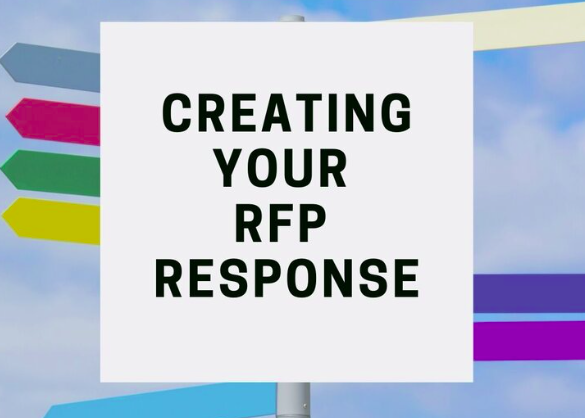In the world of commerce, an RFP (Request for Proposal) is a vital tool that organizations use whenever they want to outsource projects or buy goods and services. It’s actually like an official invitation to suppliers who might be interested in offering their services in proposals. For this reason, writing up an organized and comprehensive RFP template will go a long way in ensuring you get relevant responses which can be compared and harmonized with your organizational goals. Here are some key elements of an effective RFP template along with examples.
1. Introduction and Background:
Begin by talking about your company and giving some background on the project or procurement opportunity. Briefly explain the purpose of the request for proposal template as well as its expected outcomes.
2. Scope of Work:
– Clearly state what you want done in terms of the project or items being procured including specific deliverables, milestones, any technical requirements.
– For example, “The scope of work includes but is not limited to: website design, development, content migration, integration of e-commerce functionality and training for staff on content management.”
3. Technical Requirements:
– Discuss any technical specifications; standards or compatibility issues that vendors must address.
– For example, “It should be a mobile-responsive website optimized for SEO; compatible with major web browsers; built using CMS (Content Management System) such as WordPress or Drupal.”
4. Evaluation Criteria:
– Provide a clear description of how people will evaluate the proposals offering examples such as technical expertise, past experience pricing and proposed timelines among others.
– Like this one “Evaluation criteria include vendor expertise on website design, proficiency demonstrated using relevant technologies; projected project timeline and cost.”
5. Submission Guidelines:
– Indicate how vendors should prepare and submit their proposals, giving deadlines as well as contact details for clarification.
– For instance, “Proposals must be submitted in PDF format via email to [email address], no later than [deadline]. Any questions concerning this RFP should be directed to [contact name] at [contact email].”
6. Terms and Conditions:
– Include any legal or contractual terms that vendors are required to agree before they can participate in the RFP process.
– For example: “By submitting a proposal, bidders accept the terms and conditions contained herein. ABC Company reserves the right to accept or reject any of all proposals it receives.”
7. Appendix:
– It may also incorporate additional documents or reference materials that could assist suppliers while preparing their bids.
– Such as “Appendix A: Current website analytics report
By following these rules and adapting the template to your unique needs, you will simplify the RFP process and attract high-quality responses from qualified suppliers who can meet your company’s requirements. When designing a good RFP template, always remember that clarity is paramount in this form of communication. If you’re opting for any request for proposal template online, then do consider these all the things while editing your online request for proposal template. The best solution is to make it designed by trusted designers like Infinix Designers.
Mistakes to Avoid while Creating an RFP Template
There is quite a thin line between provision of enough information to potential vendors and shunning unnecessary complexity or confusion during the drafting of an RFP (Request for Proposal) template. There are a number of common mistakes that organizations must avoid as they develop their own templates, although well-structured RFP templates enhance procurement efficiency.
Let us look at some important points to avoid in an RFP template:
Ambiguous or Vague Language:
To prevent potential vendors from being misunderstood by using uncertain or puzzling language, make an effort to have everything spelled out in clear terms and expectations.
Example: “The website should be user friendly” can be replaced with specific usability requirements such as easy navigation, simple ways to access information and meet the accessibility standards
Excessive Detail:
– Do not provide too much information to vendors, but give them enough.
– Example: Instead of a long list of technical specifications, focus on the most important requirements and allow room for flexibility in vendors’ proposals.
Unrealistic Expectations:
– Be realistic about timelines, budget constraints as well as project scope expectations. Setting unrealistic expectations may either discourage qualified vendors from submitting proposals or result in disappointment later during actual project execution.
– Example: Instead of expecting complex website redesign done within an unreasonably short period of time, plan for a reasonable timeline that takes into account the complexity of the project.
Lack of Flexibility:
– Avoid rigid requirements that limit a vendor’s ability for proposing innovative solutions; lack of flexibility discourages creative thinking and narrows down fit-for purpose options within which you have to make a choice.
– Example: Do not state a particular technology or approach, instead give them some flexibility so they can propose alternative solutions that might better suit your needs.
Unclear Evaluation Criteria:
– The evaluation criteria should be clearly defined and aligned with the objectives of the project. Vague or ambiguous evaluation criteria can result in inconsistent evaluations and undermine fairness in the selection process.
– Example: Instead of just saying that “Technical expertise will be evaluated”, provide specific criteria such as relevant experience, qualifications of the project team, and examples of past projects.
Lack of Communication:
– Engage potential vendors throughout the RFP process; don’t leave them in darkness and provide clarity on all inquiries raised. Proper communication helps to ensure that vendors understand what is needed from them.
– Example: There should be a point person for inquiries with all questions answered within no time.
By avoiding these common pitfalls, organizations can create RFP template that effectively communicate their needs and expectations while attracting qualified vendors and facilitating a smooth procurement process. It is important to remember that a good RFP template has clarity, transparency, and flexibility considerations at its core. That’s why Infinix Designs have talented designers and professional writers to create an RFP and RFP Template for your business.
Imagine this: In a world where RFPs (Request for Proposals) are not merely papers but gateways into creative collaborations.
The RFP is no longer an arid piece filled with technical jargon and rigid requirements; it turns out to be a map leading adventurous sellers into innovations’ quest.
Each section of the RFP is not only a list of demands, but also a puzzle to be solved, a challenge to conquer. The scope of work is not just outlined but presented like it’s a quest with mythical creatures and treasures.
These technical requirements are more than just specifications; they offer clues that can unlock hidden secrets and potential for innovation. Vendors must find their way through them and come up with mind-blowing proposals.
And when they feel like they have found all the answers, they look at the evaluation criteria –some kind of series of tests designed to differentiate good from excellent. However, only those who dare to think beyond limits will emerge victorious in this case.
But there’s something much more important about this imaginative request for proposal rather than prizes offered by it. It does not push vendors into making mere proposals. In this realm, an RFP is more than just another means to an end; rather, it represents imagination and collaboration personified. Its message is that riches do not lie in gold or silver but in shared pursuit of greatness through innovation.
Advantages Of a Well-Written Request for Proposal
A well-written RFP can bring many advantages to organizations looking to outsource projects or procure goods and services. Some key benefits include:
Clarity and Alignment: As such, these documents ensure that there is alignment and clarity in the organization’s expectations from suppliers from the onset.
Competitive Bidding: Process: Request for Proposal (RFP) ensures that organizations can request for proposals from multiple vendors, resulting in competition among vendors therefore reducing costs
Quality Assurance: Through careful evaluation and selection criteria outlined in an RFP document, organizations can identify vendors that have skills and experience required to deliver quality results.
Risk Mitigation: In this regard, RFPs state specific requirements in advance which can reduce chances of mis-interpretations, delays or cost overruns during project implementation.
Transparency and Accountability: An RFP provides a transparent and structured framework for the procurement process, promoting accountability and fairness.
Innovation and Creativity: An RFP also defines new boundaries but at the same time encourages your suppliers to think outside the box by coming up with creative ideas on how your company needs can be met.
Tips for Writing RFP in 2024
In 2024, there are tremendous changes in the way business procurement is carried out. This has been caused by technological advancement, changing market dynamics, and an increasing emphasis on collaboration and innovation. In a bid to remain competitive in the marketplace, organizations are realizing the significance of having effective Request for Proposal (RFP) documents written. These documents form the basis of every procurement undertaking since they guide potential vendors toward understanding what the organization needs and propose ways of addressing them. However, this dynamic environment calls for new approaches to writing RFPs. For companies to successfully undertake modern procurement, therefore, they ought to change their RFP strategies accordingly which will be flexible, transparent, and inclusive as well.
To improve RPFs’ writing as well as quality in 2024; thereby promoting cooperation and thinking outside the box entails best practices such as specific objectives that are openly communicated through transparency among other skills that have ultimate priority on collaboration and innovation The primary content of this study will examine some vital hints and rules when it comes to RFP writing in 2024 to enlighten organizations with essential knowledge necessary to effectively pass through this process of acquisition with ease while attaining their desired results.
Procurement is a vital process for any organization, and creating an RFP is the most crucial step. Here are some tips to help you write your RFP in 2024:
1. Start with Clarity: Start your RFP with a clear and concise summary of what your project or procurement needs. You should be able to outline the goals, timelines and desired outcomes and ensure that all stakeholders understand.
2. Define Your Goals: You need to be precise about the objectives and goals of the project. What challenges do you want to address? What results do you wish for? This will assist potential vendors to comprehend your needs better and propose solutions that are relevant.
3. Be Specific, But Flexible: It’s important to provide detailed requirements however avoid being too prescriptive. Instead of telling vendors exactly how they should meet your objectives, focus on describing expected results. This way, the suppliers will have room for innovation while still aligning their work with what you expect from them.
4. Include Evaluation Criteria: Proposals criteria should be clearly stated as well as how they shall be evaluated by the panelists. Items such as technical know-how among others can be included here. Price and proposed timeline may also appear in this section. Creating transparency in evaluation helps suppliers understand what matters in your firm thus developing proposals that suit it.
5. Emphasize Collaboration: Make sure there is plenty of collaboration and open communication throughout the RFP process including answering potential vendor’s questions when necessary. This way trust is built from the beginning which leads to positive rapport.
6. Consider Accessibility and Diversity: Your RfP process should reflect diversity across different sellers. Examples are giving clear instructions written using inclusive language or providing alternative ways of submitting proposals. Diversity calls for varied perspectives hence innovation within a group of vendors.
7. Set Realistic Expectations: Be realistic about timeframes, budget constraints, scope, etc as these also intimidate some vendors who would have otherwise submitted proposals. Unrealistic hopes will discourage potential suppliers from submitting proposals and might lead to later disappointments. Focus on objectives that are attainable with respect to available resources and priorities of your organization.
8. Review and Revise: Ensure that the RFP is free of errors, and formatting inconsistencies, and ask for external opinions before sending it out to stakeholders. A well-tailored invitation for bidding ensures success in the procurement process.
9. Seek Feedback: It is important that immediately after completion of the RFP you seek feedback from both vendors and internal stakeholders about the process looking into what went well and what could be improved in future RFPS. This improves your next RfP since you incorporate changes based on facts obtained with time.
10. Maintain Transparency: Lastly, it’s crucial not to compromise transparency throughout the whole RFP exercise during all communications made fair as well as transparently updated vendors in case of any changes. The aim here is to develop trustworthiness thus successful partnerships in due course
Writing an effective RFP that attracts qualified vendors while effectively communicating an organization’s need can make the difference between the success or failure of a project when put into action if one considers these best practices.
How to Outline the Budget and Scope of Work in RFP
While crafting an RFP (Request for Proposal), the budget and scope of work must be detailed so that potential vendors can have a clear understanding of project parameters and constraints. This is how to effectively handle these elements in your RFP:
Budget Overview:
The budget part should give a clear picture of the financial restrictions to the bidders. Initially, indicate the overall budget for the project and any specific budgetary considerations or restrictions that vendors should know about. It could contain prohibitions on particular spending or cost allocation guidelines.
Also, divide your budget into relevant categories or line items to provide a more comprehensive view of suppliers on where money will be distributed. Clearly state how the budget will be shared among different components of this project such as labor, material costs, and overheads.
It is crucial also to communicate expectations or requirements regarding pricing structures and payment terms. For example, it should be specified whether you require fixed price bidding, time plus materials contracts or another model of pricing. Additionally, describe when payments are expected along with milestones or deliverables tied to payment schedules.
Finally, request vendors to include breakdowns and detailed cost estimates in their proposals so that they align with your limitations regarding money. This allows you to make fair comparisons between proposals by estimating them more accurately.
Define Scope Of Work:
The scope of work section in your RFP provides an overall description of tasks, deliverables, and objectives enabling vendors through the bidding process to understand what exactly needs to be done when working on this type of project. Begin by clearly defining the goals and objectives of the project including any desired outcomes or success measures.
Next, divide the project into smaller activities/tasks/phases by indicating what they involve/require/deliver, etc. This would enable vendors to get proper insight into their required input/output specifications may include technical specifications performance requirements quality standards. Moreover it’s important to note any dependencies/constraints that might affect the project’s scope such as regulatory requirements resource limits external dependencies. This will enable the bidders to correctly assess project feasibility, and propose timelines and approaches that are realistic.
In this section of the scope of work, flexibility and collaboration should be emphasized to encourage vendors to propose innovative solutions and approaches that would fit into your objectives. Always be ready to hear vendors’ feedback because they might have something good for you in their suggestions concerning the project’s outcomes.
By outlining the budget and scope of work effectively in your RFP you create a foundation for a successful procurement process that ensures all potential bidders understand what is required for the execution of this project. This promotes transparency, clarity, and alignment leading to better proposals/accurate tenders hence improved organizational performance/results.
SUMMARY
In summary, a well-written RFP sets the stage for a successful procurement process by enabling organizations to find best-fit suppliers and attain their objectives effectively and efficiently. So, when you prepare your next RFP, don’t treat it as some mere formality; consider it as an outlet for spurring creativity and embarking on amazing adventures. You will never know what miracles may happen along your way.





